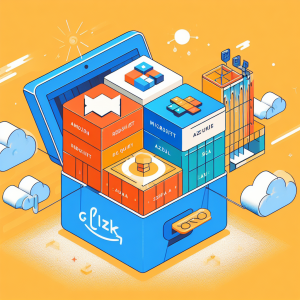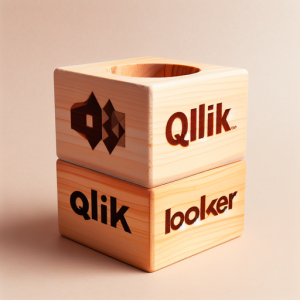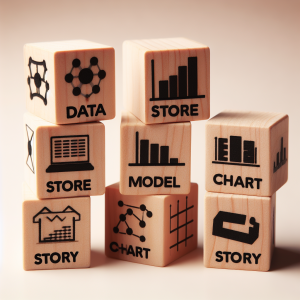Introduction:
In the dynamic landscape of modern business, data has become the cornerstone of informed decision-making. The ability to transform raw data into actionable insights has given rise to the indispensable Business Analytics Stack. This integrated framework plays a pivotal role in unravelling patterns, trends, and opportunities buried within the vast sea of information, empowering organizations to stay ahead in the competitive curve.
Are you ready to explore the key components of the Business Analytics Stack? Come with us on our journey to discover the important factors that make businesses successful using data-based decisions. Whether you’re a seasoned data professional or beginning to navigate the world of analytics, this guide aims to unravel the intricacies and unveil the power that lies within a well-structured Business Analytics Stack.
Overview of Business Analytics Stack
In a world where data reigns supreme, the Business Analytics Stack emerges as a comprehensive solution to manage the Business Analytics Process. At its core, the Business Analytics Stack serves as a structured framework designed to harness the potential of data from diverse sources, transforming it into valuable insights that drive strategic decision-making.
Defining the Business Analytics Stack
The Business Analytics Stack is a set of tools, technologies, and processes that help organizations collect, store, process, and visualize data. It serves as a system, guiding businesses through the entire data lifecycle, from the initial gathering of raw data to the generation of actionable insights. Its ultimate aim it to support the Business Analytics Process.
Transforming Raw Data into Insights:
The Business Analytics Stack aims to transform raw, diverse data into actionable insights. This requires several steps, starting with collecting data from different sources, then integrating it into a central repository. This integrated approach lays the foundation for the stages of data modelling, preparation, and analysis, culminating in the creation of comprehensible visualizations and reports.
Driving Informed Decision-Making

The ultimate goal of implementing a Business Analytics Stack is to empower organizations to make informed decisions based on a thorough understanding of their data. By integrating advanced analytics, predictive modelling, and data visualization, businesses can gain a comprehensive view of their operations, customers, and market dynamics. This, in turn, enables agile decision-making, fostering a data-driven culture within the organization.
As we embark on this exploration of the Business Analytics Stack, our journey will take us through the fundamental components that constitute this powerful framework. Join us as we uncover the intricacies of data collection, integration, warehousing, modelling, and visualization, each playing a crucial role in shaping the landscape of modern business analytics.
This breakdown provides a quick reference for understanding the purpose of each area within the Business Analytics Stack and highlights example products associated with each component. Organizations often customize their stacks based on specific needs and preferences, considering factors such as scalability, integration capabilities, and user-friendliness.
Key Components of the Business Analytics Stack
Several important parts come together to create a strong and smooth framework for Business Analytics. Each component plays a distinct role in the journey from raw data to actionable insights. Let’s delve into these essential elements:
- Prep and Transform
-
Data Collection and Integration:
The journey starts by carefully gathering and combining data from different sources. This involves extracting raw data and loading it into a centralized repository. Tools and processes like ETL (Extract, Transform, Load) pave the way, ensuring that data is ready for analysis. Products include Talend, Microsoft SSIS (SQL Server Integration Services), Azure Data Factory, Apachee NiFi and Informatica PowerCenter.

-
Data Modelling and Preparation:
With data housed, the next step involves modelling and preparing it for analysis. To get data ready for analysis, we use techniques like normalization, cleaning, and transforming. Tools such as Python, R, and SQL allow for a sophisticated modelling process
2. Analysis and Modelling
-
Data Storage
A strong storage system is the foundation of the Business Analytics Stack. It stores all types of data in one place and can handle a lot of information. You can use platforms like Amazon Redshift, Google BigQuery, Microsoft Azure, or Snowflake to store and manage large datasets. These can act as a data warehouse or data lake.

-
Predictive Analytics:
Predictive analytics forecasts future trends by using historical data in the Business Analytics Stack. Organizations can use machine learning algorithms and predictive modelling to predict market shifts and customer behaviour, which influence business outcomes. We use different languages and products for this work, such as Python (with libraries like Scikit-learn, TensorFlow, and PyTorch), R (with packages like caret and randomForest), and IBM SPSS or SAS Predictive Analytics.

3. Exploration and Visualization
-
Data Visualization:
Turning raw data into comprehensible insights is made possible through data visualization. Powerful tools like Tableau, Power BI, Qlik and Looker enable the creation of visually appealing and informative charts, graphs, and dashboards. Visualization is key to conveying complex data trends and patterns in an accessible manner.

4. Interpretation and Communication
-
Reporting and Dashboards:
The last frontier is about giving important information to people in a way they can understand and use. You can create reports using tools like Google Data Studio, Microsoft Excel, and customized dashboards. These reports simplify complex analyses for decision-makers.
Conclusion and Future Trends in Business Analytics
As we wrap up our exploration of the components of the Business Analytics Stack, it’s essential to summarize key takeaways and look ahead to the future trends shaping the business analytics landscape.
Key Takeaways:
-
Integrated Ecosystem:
The Business Analytics Stack is a system that helps organizations turn data into useful information.
-
Strategic Decision-Making:
A good stack helps with decision-making by showing all the organizational data.
-
Challenges and Considerations:
To get the most out of the analytics stack, it’s important to overcome challenges. These challenges include data security, scalability, and user adoption.
Future Trends:

-
Advanced AI and Machine Learning Integration:
Organizations will use more advanced AI and machine learning to gain better insights and improve predictions.
-
Augmented Analytics:
Augmented analytics will automate data preparation, insight discovery, and sharing, making analytics accessible to non-technical users. It combines AI and analytics.
-
Edge Analytics:
Edge analytics will help organizations process data closer to the source. This reduces latency and supports real-time decision-making.
-
Continuous Innovation in Visualization:
As technology advances, visualization tools will improve. Users can explore and understand data in more interactive and immersive ways.
-
Ethical AI and Responsible Data Practices:
Organizations will focus more on transparency, fairness, and privacy as ethical AI and responsible data practices become more important.
Final Thoughts:
The Business Analytics Stack is more than just technology. It also shows a shift towards using data for decision-making. Organizations can succeed in a data-centric business landscape by embracing this stack and facing its challenges.
As we look to the future, staying abreast of emerging technologies, fostering a culture of continuous learning, and adapting to evolving regulatory landscapes will be critical. The Business Analytics journey is an ongoing process, and organizations that invest in building a data-driven culture will be well-positioned to thrive in the years to come.
Thank you for joining us on this exploration of the Business Analytics Stack. We hope this guide equips you with the knowledge and insights needed to harness the power of data for the success of your organization.
Contact us if you want to find out more or discuss references from our clients.
Find out about our Business Intelligence Consultancy Service.
Or find other useful SQL, Power BI or other business analytics timesavers in our Blog
Our Business Analytics Timesavers are selected from our day to day analytics consultancy work. They are the everyday things we see that really help analysts, SQL developers, BI Developers and many more people. Our blog has something for everyone, from tips for improving your SQL skills to posts about BI tools and techniques. We hope that you find these helpful!
Blog Posted by David Laws



